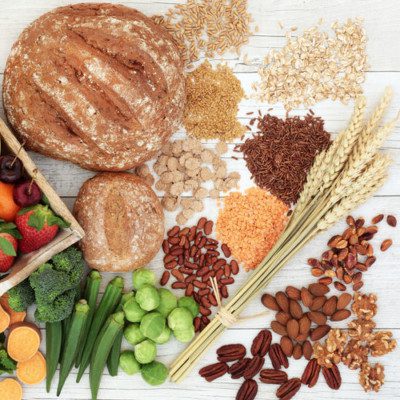Origin
Prebiotics were first defined in the mid-1990s as being able to alter the gut microbiota and improve health and wellbeing. The definition has been evolving since then to include many restrictions that differentiate them from dietary carbohydrates. Some prebiotics such as inulin occur naturally in foods such as leeks, chicory, Jerusalem artichokes and so on. Consumption of these foods has been common components in the U.S. and European diets for a long time.1
Composition
Prebiotics are differentiated from dietary fibers by the following criteria. They must be:
- Resistant to gastric acidity, enzymatic hydrolysis and absorption in the GI tract
- Fermented by selective intestinal microflora
- Lead to selective stimulation and growth of the same
Carbohydrates with low digestibility such as Xylooligosaccharides (XOS), pectic- oligosaccharides, mannooligosaccharides, arabinoxylanoligosaccharides (AXOS) and galactooligosaccharides (GOS) are most commonly used as prebiotics.2
Nutrition
Consumers who meet the daily suggested 5-8 servings of fruits and vegetables daily consume enough prebiotics to confer health benefits. Saccharolytic fermentation is favored due to its ability to produce short chain fatty acids (SCFA) such as propionate, butyrate and acetate with documented health benefits.
Applications
The following is a list of selected prebiotics, their source, applications in baking and some health benefits:
| Type | Source | Application | Benefits |
| Inulin | Plants containing fructan or vegetables such as onion, leek, garlic, asparagus, chicory root, and artichoke. | Inulin can be added to biscuits, breads, muffins, crackers, and even cereals to provide additional health benefits. | Increases calcium absorption within the body, so bakers often add inulin when desiring a baked good with increased calcium levels. |
| Fructo-oligosaccharides (FOS) | Agave, asparagus root, chicory roots. | Can be used in bread, biscuits, gluten-free cheese bread, etc. to improve quality and nutritional value (calorie-free, non-cariogenic) and bulking agent. | Helps increase beneficial bacterial growth in the large intestine, often supplied in conjunction with probiotic sources. |
| Galacto-oligosaccharides | Made of glucose polymers from lactose enzymatic hydrolysis. | They can be used as sweeteners in fermented milk products, breads, jams, confectionery, beverages, etc. They can also be used in baked goods such as bread. | Generation of GOS fermentation products (short chain fatty acids).May also help with calcium and magnesium absorption. |
| Lactitol | Prepared by hydrogenation of lactose solution. | May be used as a bulk substitute for sugar. | Heightens growth of bacteria within the colon. |
| Lactulose | Formed from lactose and fructose; is semisynthetic. | May be used to bake French breads like Hamam bread with improved specific bread volume, delayed staling and better nutritional quality. It may be used as a sweetener in confectionery products, and as a type of yoghurt-additive in milk/dairy applications. | It leads to a positive change in intestinal microflora. Can help restore/improve liver health.4 |
FDA regulations
Inulin, fructooligosaccharides and galactooligosaccharides have been evaluated by the FDA and are considered safe for consumption.
The FDA has proposed to change the declaration of non-digestible carbohydrates, other than dietary fibers as ‘other carbohydrates’ such as starch and oligosaccharides on the nutritional facts panel.
References
- Brownawell, AM., Wim C, Glenn R. G, Cyril WC Kendall, Kara D. L, Yehuda R, and Joanne L. S. “Prebiotics and the health benefits of fiber: current regulatory status, future research, and goals.” The Journal of nutrition 142(5). 2012. pp 962-974.
- Roberfroid, M. “Prebiotics: the concept revisited.” The Journal of nutrition 137(3) 2007. pp830S-837S.
- Salmerón, I. “Fermented cereal beverages: from probiotic, prebiotic and synbiotic towards Nanoscience designed healthy drinks.” Letters in applied microbiology 65 (2) 2017. pp. 114-124
- Sitanggang, A. B., Anja D., and Matthias K.. “Recent advances on prebiotic lactulose production.” World Journal of Microbiology and Biotechnology 32(9), 2016,pp. 154.

